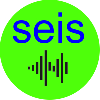Geophysical Methods
exploration, near surface and marine methods
Seismology |
Seismic exploration |
Seismic source |
Seismic Refraction |
Seismic Reflection |
Seismic MASW-REMI |
Borehole |
Marine Seismic |
Seismic Processing-Imaging |

Seismic Reflection
Seismic reflection is a geophysical technology which is directly related to the acoustic impedance between geological materials: the greater the acoustic the greater seismic reflection. This technology is most useful where the density contrast between geological materials is large. Therefore, seismic reflection is useful in defining material interfaces, and this can be used to constrain other layer interpretations with other geophysical technologies e.g. Seismic Refraction or Multichannel Analysis of Surface Waves (MASW). Seismic reflection is affected by external seismic noise and is recommended to be utilised in areas of low seismic noise e.g. away from active drill rigs. Where a large enough acoustic impedance is not present a reflection may not be visible in the data. The Reflection technique follows the law of mirror images – the angle of reflection from a surface is equal to the angle of incidence. Shots are fired, in turn, at each of the geophone positions and active geophones are progressively added ahead of the shots, and taken up from behind the shots, in a roll–along fashion.PASTE RESPONSIVE AD
At each subsurface boundary, across which the elastic and density parameters differ, a percentage of the energy in the wave is reflected back to the surface where it is recorded. If a particular boundary is horizontal, the reflection point will be half way between the shot and any given geophone. Reflecting boundaries are mapped out as the system rolls along. Placing each reflection point in its proper place in the subsurface requires intense and complicated processing of the collected information. P-wave reflection techniques can be used to map structures, faults, lithology, reservoirs and mineral deposits. Shearwave reflection techniques can provide accurate soil stratigraphy, near-surface faulting, void detection, bedrock topography and channel identification.
PASTE RESPONSIVE AD